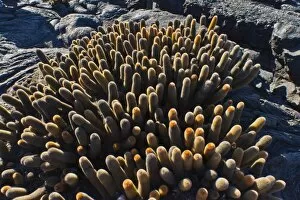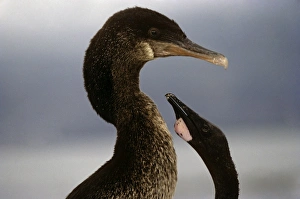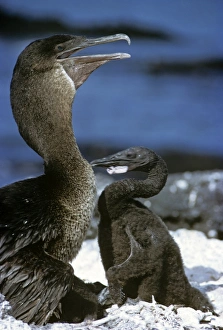Fernandina Island Collection (page 4)
Fernandina Island, located in the Pacific Ocean as part of the Galapagos Islands in Ecuador, is a haven for unique and fascinating wildlife
All Professionally Made to Order for Quick Shipping
Fernandina Island, located in the Pacific Ocean as part of the Galapagos Islands in Ecuador, is a haven for unique and fascinating wildlife. This volcanic island boasts an array of captivating sights and species that are sure to leave visitors in awe. One such sight is the heartwarming display of affection between two Marine Iguanas (Amblyrhynchus Cristatus). These remarkable creatures can be seen bonding on Fernandina's shores, showcasing their strong connection amidst the stunning backdrop of crashing waves. Underwater, these marine iguanas continue to captivate with their grazing habits. Watching them delicately feed on Ulva algae while navigating the lava seafloor is a mesmerizing experience that highlights their adaptability and resilience. Speaking of lava, Fernandina Island showcases its volcanic origins through its unique landscapes. Pahoehoe lava formations dominate this enchanting island, creating an otherworldly atmosphere that transports visitors into another realm entirely. As we explore further, we witness marine iguanas emerging from the sea after indulging in their algal feast. Their sleek bodies glistening under the sun serve as a reminder of how closely intertwined they are with both land and sea ecosystems. But it's not just about iguanas on Fernandina Island; Sally Lightfoot Crabs (Grapsus grapsus) also grace its rocky shores. With vibrant colors contrasting against crashing waves at Cape Douglas, these crabs add a touch of liveliness to this already breathtaking landscape. The endemic species found here make Fernandina Island even more special. From underwater encounters with marine iguanas to aerial views revealing dense stands of Lava cactus (Brachycereus nesioticus), every corner holds something truly extraordinary waiting to be discovered within Galapagos National Park. However, conservation efforts must remain steadfast due to critically endangered inhabitants like the Fernandina Giant-Tortoise (Chelonoidis phantasticus).
























